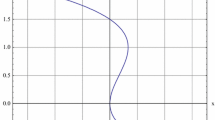Abstract
Randolph Sloof has written a comment on the lobbying-as-signalling model in Rasmusen (1993) in which he points out an equilibrium I missed and criticizes my emphasis on a particular separating equilibrium (see this issue). In this response, I discuss how to interpret multiple equilibria in games and how to interpret mixed strategy equilibria in which two types of player with identical incentives must pick different mixing probabilities.
Similar content being viewed by others
References
Banks, J. and Sobel, J. (1987). Equilibrium selection in signaling games. Econometrica 55(May): 647-661.
Cho, I. and Kreps, D. (1987). Signaling games and stable equilibria. Quarterly Journal of Economics 102(May): 179-221.
Harsanyi, J. (1973). Games with randomly disturbed payoffs: A new rationale for mixed strategy equilibrium points. International Journal of Game Theory 2: 1-23.
Rasmusen, E. (1993). Lobbying when the decision maker can acquire independent information. Public Choice 77: 899-913.
Sloof, R. (1997). Lobbying when the decision maker can acquire independent information: A comment. Public Choice 91: 199-207.
Author information
Authors and Affiliations
Rights and permissions
About this article
Cite this article
Rasmusen, E. Choosing among signalling equilibria in lobbying games: A reply to Sloof. Public Choice 91, 209–214 (1997). https://doi.org/10.1023/A:1004903313621
Issue Date:
DOI: https://doi.org/10.1023/A:1004903313621




